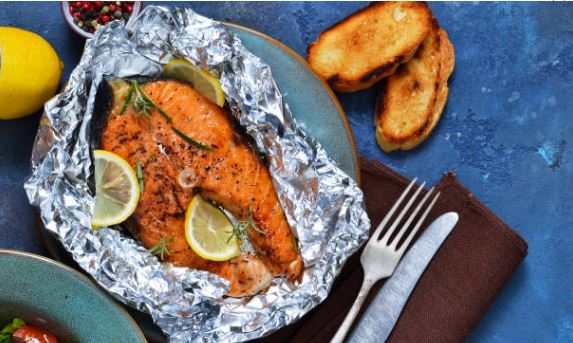Lifestyle
7 things you should never do with aluminum foil

Aluminum foil has many uses in the kitchen and beyond, from tenting over casseroles to even cleaning grill grates. But it’s not infallible.
There are some aluminum foil uses we don’t recommend, either because they’re not effective or they’re just downright dangerous.
We’re not suggesting you toss this versatile kitchen wrap, but do make sure you’re not committing any of these common aluminum foil mistakes.
1. Don’t use aluminum foil to bake cookies
When it comes to baking cookies, it’s best to reach for parchment paper over aluminum foil. That’s because aluminum is extremely conductive, meaning any part of the dough that makes direct contact with the foil will be exposed to much more concentrated heat than the rest of the dough. What you end up with is a cookie that’s over browned or even burnt on the bottom and undercooked on the top.
2. Don’t put aluminum foil in the microwave
This one may go without saying, but a little reminder never hurts: According to the FDA, you should never put aluminum foil in the microwave because microwaves reflect off the aluminum, causing food to cook unevenly and possibly damage the oven (including sparks, flames, or even fires).
3. Don’t use aluminum foil to line the bottom of your oven
Lining the very bottom of your oven with aluminum foil might sound like a good way to catch spills and avoid major oven cleanups, but the folks at Reynolds don’t recommend it: “To avoid possible heat damage to your oven, we do not recommend using aluminum foil to line the bottom of your oven.” Instead of placing a sheet of aluminum foil on the oven floor, place a sheet on an oven rack below whatever you’re baking to catch drips (make sure the sheet is only a few inches larger than your baking dish to allow for proper heat circulation). You can also just keep a sheet of foil on the lowest rack of your oven at all times, replacing the foil as necessary, in order to always have a layer of disposal protection against spills.
4. Don’t use aluminum foil to store leftovers
Leftovers will keep in the fridge for three to four days, but aluminum foil isn’t ideal for storing them. Foil is not airtight, meaning no matter how tightly you wrap it, some air will get in. This allows bacteria to grow faster. Instead, store leftovers in airtight storage containers or food storage bags.
5. Don’t toss aluminum foil after one use
Turns out, Grandma was right. Foil can certainly be reused. If it’s not too crumpled or soiled, you can wash aluminum foil by hand or in the top rack of the dishwasher to get a few extra miles out of each sheet. When you decide it’s time to retire a sheet of aluminum foil, it can be recycled.
6. Don’t bake potatoes in aluminum foil
Think twice before wrapping your spuds in foil. Aluminum foil does trap heat, but it traps moisture, too. This means your potato will end up more soggy and steamed as opposed to baked and crisp.
In fact, the Idaho Potato Commission is adamant that baking potatoes in aluminum foil is a bad practice. Plus, storing a baked potato in the aluminum foil it was baked in gives botulinum bacteria the potential to grow.
So even if you do choose to bake your potatoes in aluminum foil, be sure to remove the foil before storing it in the fridge.
7. Don’t use just the shiny side on aluminum foil
Unless you’re using a non-stick aluminum foil, it makes no difference which side of the foil you use. According to Reynolds, it’s fine to place food on both the dull and shiny side of aluminum foil. The difference in appearance has to do with the milling process, in which one side comes in contact with the mill’s highly polished steel rollers.






